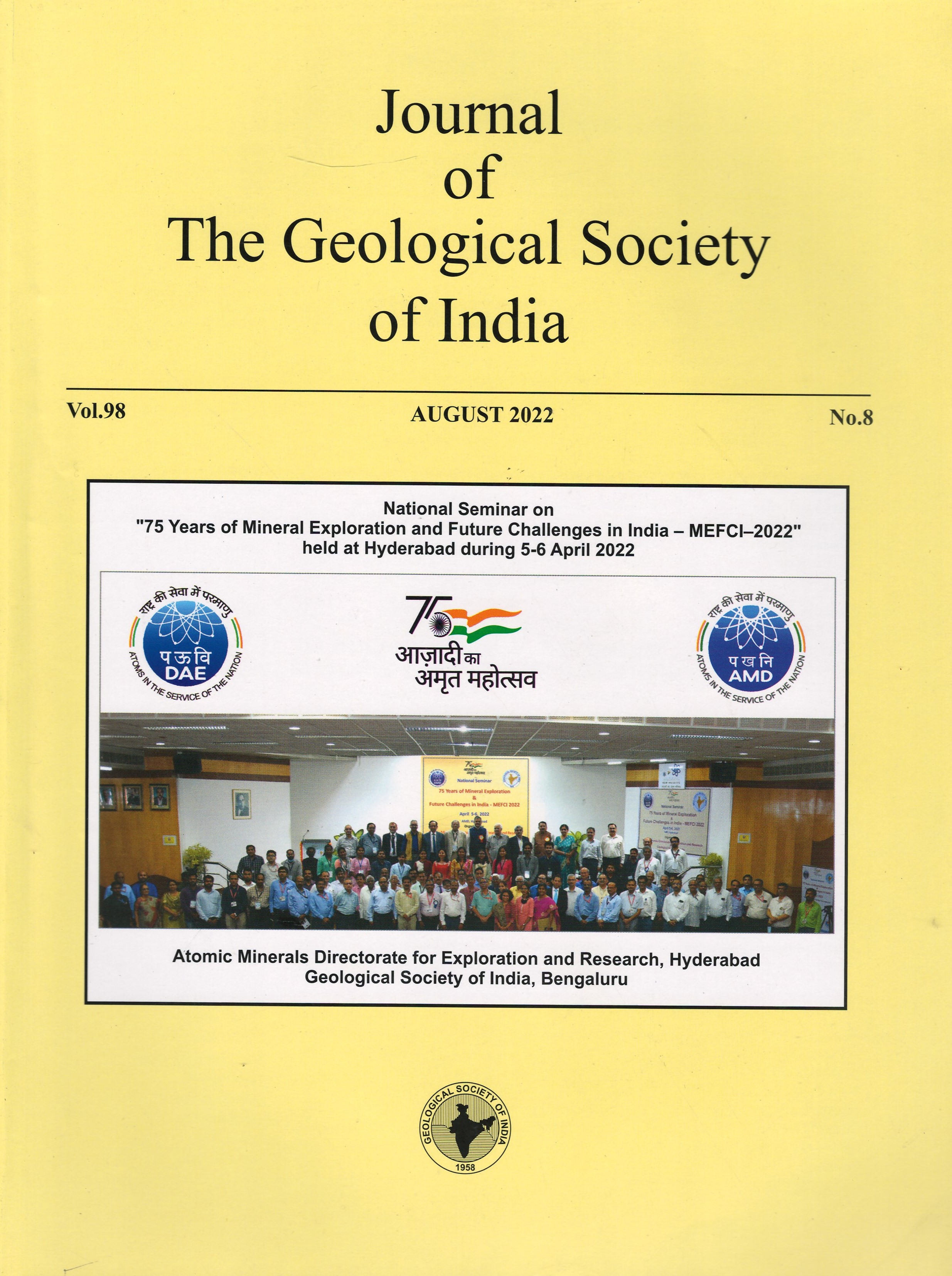Age of Uranium Mineralisation from North Delhi Fold Belt (NDFB): Evidences from U-Pb, Pb-Pb and Sm-Nd Systematics
DOI:
https://doi.org/10.1007/s12594-022-2127-6Keywords:
No KeywordsAbstract
Results of multi-method geochronological study (U-Pb, Pb-Pb and Sm-Nd), on uranium mineralized rocks along the albitite line in the North Delhi Fold Belt (NDFB, Rajasthan, India) are presented. The Pb-Pb ages obtained, on uranium mineralized core samples, from Rohil uranium deposit, Sikar district, Rajasthan (south western part of NDFB), are 836 ± 5 Ma (Pb Sequential Leaching-PbSL, weighted average of 11 isochron ages), 826 ± 9 Ma (Pb-Pb isochron age on uraninite), 842 ± 18 Ma (U-Pb concordia upper intercept age, on uraninite). Similar ages of uraninites were also obtained from areas close to Rohil uranium deposit i.e. Jahaz (823 ± 10 Ma, U-Pb and 826 ± 14 Ma, Pb-Pb) and Ghateshwar areas (834 ± 14 Ma, U-Pb concordia upper intercept age and 826 ± 25 Ma, Pb-Pb isochron age). The ages of uranium mineralisation (PbSL) further in northeastern part of NDFB i.e. in Gorir area, Jhunjhunu district, Rajasthan, are 827 ± 7 Ma, 818 ± 24 Ma (PbSL) and in Dhancholi area, Mahendragarh Dist., Haryana, are 824 ± 12 Ma (U-Pb) and 824 ± 6.5 Ma (Pb-Pb). The above age data in general indicates age of uranium mineralization as 830 Ma in the NDFB. These ages are consistent with age of uranium mineralization in albitites from Brazil.
The Sm-Nd isochron age on uraninite (Rohil) is 824 ± 85 Ma with µNdi 830 Ma = - 14 that indicates source of uranium from crustal rocks which is around 1400 Ma older than the age of present dated uraninites. Probably metasediments of the Paleoproterozoic Delhi/ Aravalli Supergroup (c. 2200 Ma) or basement granite gneisses are the main source of uranium in the studied samples.

 U. K. Pandey
U. K. Pandey






